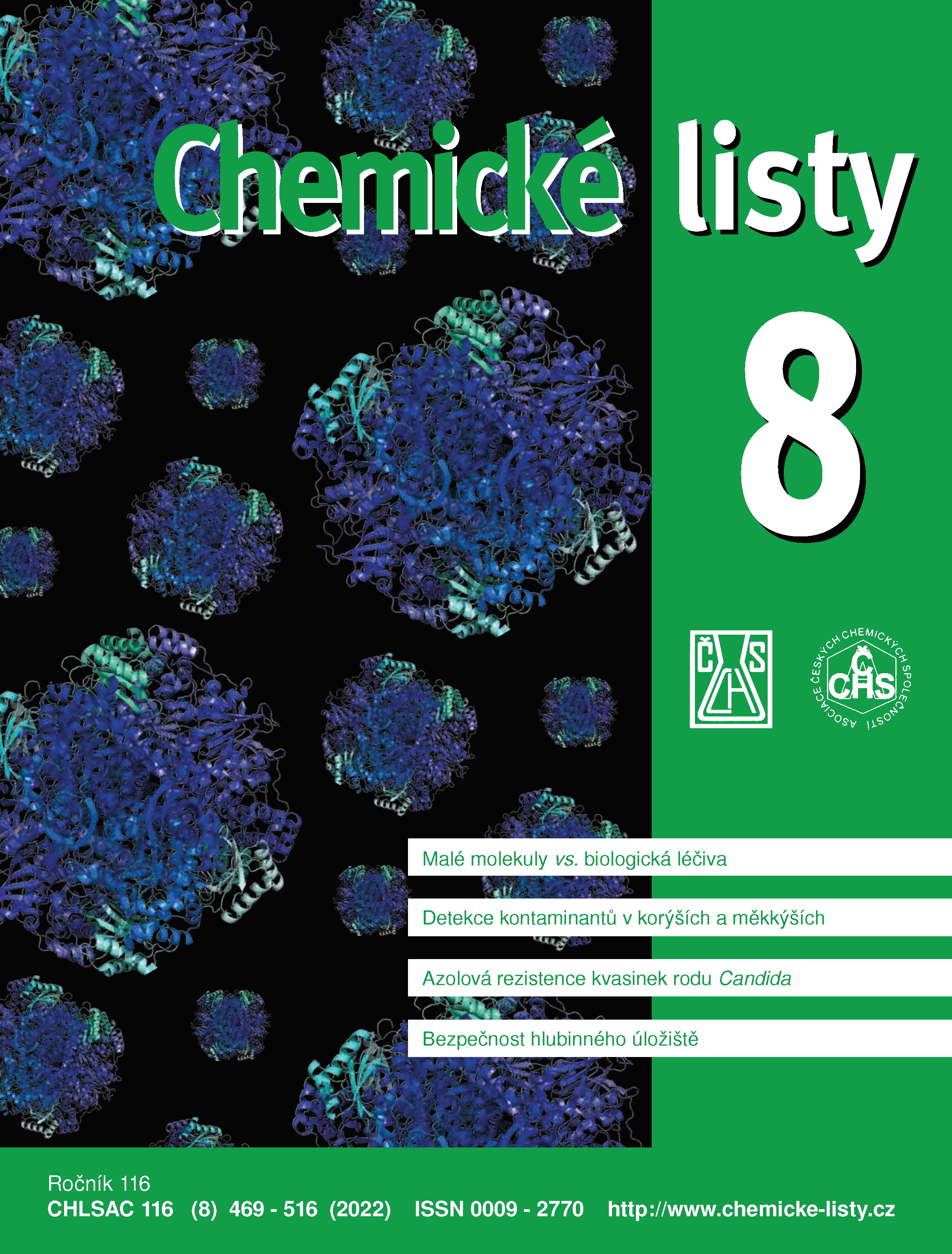Změny koncentrace esterů kyseliny ftalové v plastových materiálech vozidla v průběhu používání
DOI:
https://doi.org/10.54779/chl20220509Klíčová slova:
dibutyl-ftalát (DBP), di-2-ethylhexyl-ftalát (DEHP), plastové materiály vozidel, změkčovadlo, řidič vozidlaAbstrakt
The presence of dibutyl phthalate (DBP) and di-2-ethylhexyl phthalate (DEHP) was monitored in 16 automotive plastic samples (steering wheel, dashboard, seats, headrests, and air conditioning control). The plastic samples were obtained from a crashed vehicle that had been in operation for only one month. Phthalates were determined by HPLC. The first analysis was performed immediately after the sample preparation, the second one after 3 months of storage, the third one after 6 months of storage, the fourth one after 9 months of storage, and the fifth one after 15 months of storage. The average DBP concentrations ranged from 1.3 to 197.1 μg g–1 of plastic at the beginning, 1.7 to 161.5 μg g–1 of plastic in the 3rd month, 0.5 to 78.9 μg g–1 of plastic in the 6th month, 2.3 to 123.3 μg g–1 of plastic in the 9th month, and 14.0 to 98.6 μg g–1 of plastic in the 15th month. The average DEHP concentrations ranged from 1.7 to 185.7 μg g–1 of plastic at the beginning, 3.9 to 45.4 μg g–1 of plastic in the 3rd month, 1.4 to 252.4 μg g–1 of plastic on the 6th month, 5.1 to 41.7 μg g–1 in the 9th month, and 2.3 to 87.5 μg g–1 in the 15th month. In particular, higher concentrations were found in soft plastics. An interesting finding is that the content of both phthalates (DBP and DEHP) was also present in leather materials. According to the comparison of phthalates concentrations during storage, it can be stated that phthalates concentration decreases with time and, after approximately 15 months of storage, concentrations decreased: for DBP by 20 to 90% (in 44% samples) and for DEHP by 30 to 90% (in 70% samples). For the other samples, the increase of both phthalates was probably due to depolymerisation of the plastics by UV exposure, temperature and storage time. Phthalates are human carcinogens and they can cause the death or tissue malformation. They are dangerous for liver function. The legislation of the Czech Republic and European Union has not yet dealt with these problems.





